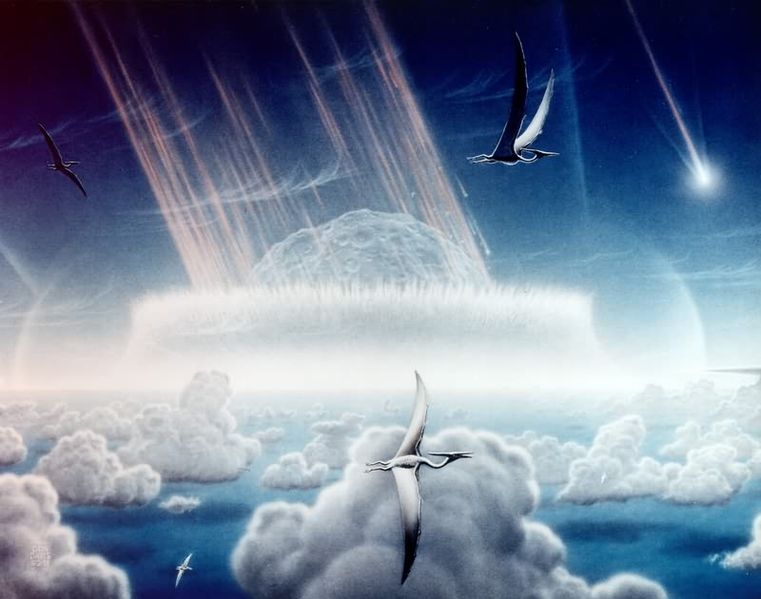This activity is not graded. The text fields below are purely for self-reflection; you do not need to submit anything for this assignment.
Identify
Identify all the pronouns in the following excerpt. Type them in the text frame below:

Figure 1 - The Chicxulub impact spewed hundreds of billions of tons of sulfur into the atmosphere, producing a worldwide blackout and freezing temperatures that persisted for at least a decade.
It’s dark. It’s always dark these days. Lights in the sky burn your eyes, so you keep your face to ground in the hopes that they’ll go away. But they don’t. The air is heavy. Heavy with poisons that make it difficult to breathe. Heavy with foreboding dread.
You, my unfortunate friend, are going through a mass extinction!
There have been five periods of mass extinction in the past. These represent major phases in the history of life where we see global reorganizations of ecosystems and their inhabitants. Perhaps the most infamous is the end-Cretaceous mass extinction, 66 million years ago. This even saw the extinction of numerous weird and wonderful marine reptile groups, the flying pterosaurs, ammonites, and of course, the non-avian (bird-like) dinosaurs.
Scientifically speaking, we’re in broad agreement about what caused this upheaval of life: the combination of a huge asteroid impact at Chicxulub in Mexico and a massive eruption of the Deccan Traps in western India.
- Answer
-
Your typed answer should look something like this:
it; it; these; your; you; your; they; they; it; you; my; there; these; we; their; this; we; this
Here is the paragraph with all the pronouns bolded:
It’s dark. It’s always dark these days. Lights in the sky burn your eyes, so you keep your face to ground in the hopes that they’ll go away. But they don’t. The air is heavy. Heavy with poisons that make it difficult to breathe. Heavy with foreboding dread.
You, my unfortunate friend, are going through a mass extinction!
There have been five periods of mass extinction in the past. These represent major phases in the history of life where we see global reorganizations of ecosystems and their inhabitants. Perhaps the most infamous is the end-Cretaceous mass extinction, 66 million years ago. This saw the extinction of numerous weird and wonderful marine reptile groups, the flying pterosaurs, ammonites, and of course, the non-avian (bird-like) dinosaurs.
Scientifically speaking, we’re in broad agreement about what caused this upheaval of life: the combination of a huge asteroid impact at Chicxulub in Mexico and a massive eruption of the Deccan Traps in western India.


